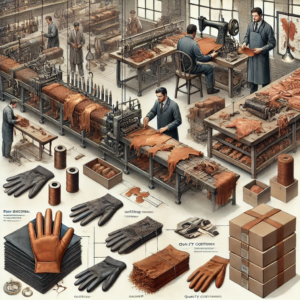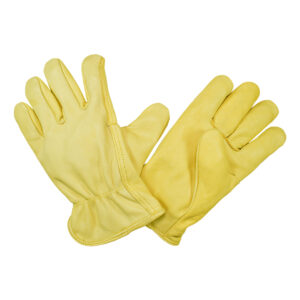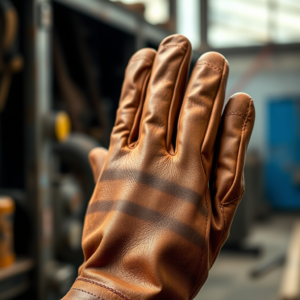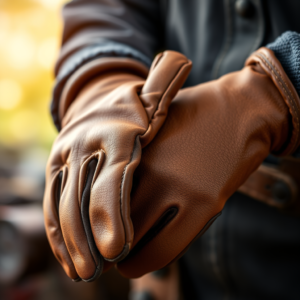
Leather gloves are a staple in industries ranging from construction to welding, offering unmatched protection, durability, and comfort. But have you ever wondered how these essential tools are made? As a trusted leather gloves exporter in India, takes you behind the scenes to explore the fascinating journey of leather gloves – from raw material to finished product.
1. Sourcing the Raw Material
The first step in the procedure is locating premium raw materials. Gloves are usually made of leather derived from animal hides, such as sheepskin, goatskin, or cowhide. These hides were picked because of their texture, strength, and flexibility. All of the leather that we use at Protective Leather is obtained responsibly and adheres to strict quality requirements.
2. Tanning the Leather
The tanning procedure is used on the hides after they are sourced. By processing raw hides with natural or chemical chemicals, tanning turns them into supple, long-lasting leather. Two primary categories of tanning exist:
- Vegetable Tanning: Uses natural tannins from plants, resulting in eco-friendly leather.
- Chrome Tanning: Uses chromium salts, making the leather more resistant to water and chemicals.
This step is crucial as it determines the leather’s strength, texture, and resistance to wear and tear.
3. Cutting the Leather
The leather is processed into exact designs for gloves after tanning. Each piece is precisely formed to fit the hand pleasantly thanks to sophisticated cutting equipment or talented craftspeople. Cutting reinforcements for high-stress areas, such as the palms and fingertips, is another phase in this process.
4. Stitching the Gloves
After that, either automated machinery or talented artisans weave the cut pieces together. Superior gloves have reinforced seams or double stitching to increase durability. For the gloves to be both comfortable and durable, this process must be done precisely.
5. Adding Reinforcements
Gloves used in difficult conditions are reinforced with extra material. This could involve additional leather layers, cushioning, or speciality coatings to guard against heat, abrasions, or chemicals. These improvements guarantee the gloves’ ability to endure the demands of industrial use.
6. Finishing Touches
Once stitched, the gloves undergo finishing processes to improve their appearance and functionality. This may include:
- Smoothing and Polishing: To give the gloves a refined look.
- Waterproofing or Conditioning: To enhance moisture resistance and maintain flexibility.
- Branding: Adding logos or labels for identification.
7. Quality Control
The gloves are subjected to stringent quality control inspections before packaging. This entails testing for fit, longevity, and adherence to safety regulations such as EN 388 or EN 407. We at Protective Leather make sure each pair satisfies our exacting requirements for performance and quality.
8. Packaging and Distribution
Packing the gloves for distribution is the last stage. Being one of India’s manufacturers of leather gloves, we make sure to package them correctly to guard against damage while in transit. After that, they are sent to businesses all around the world, prepared to offer workers comfort and safety.
Why Choose Protective Leather?
At Protective Leather, we make durable and useful gloves by fusing cutting-edge technology with age-old craftsmanship. We are a reputable brand in the sector because of our dedication to quality and innovation.
Leather gloves go through a painstaking and expertly crafted process from raw material to completed product, guaranteeing superior protection for a range of sectors. Every step, from locating ethically produced hides to conducting thorough quality control inspections, demonstrates a dedication to excellence. At Protective Leather, we take great satisfaction in fusing cutting-edge technology with age-old craftsmanship to produce gloves that are comfortable, long-lasting, and useful. Our commitment to quality guarantees that workers everywhere have the dependable hand protection they require by meeting and even surpassing industry standards. Selecting Protective Leather for each pair of gloves entails selecting durability, comfort, and safety.









